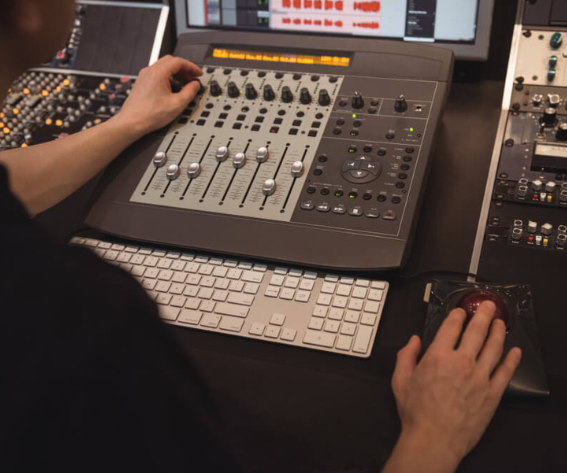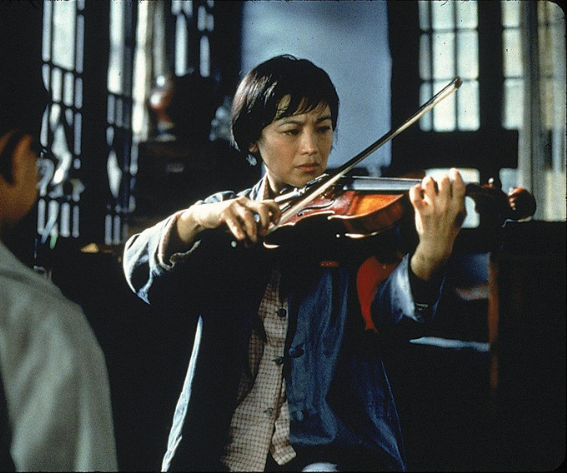In the filmmaking industry, visuals are likely to take centre stage. Directors torture themselves over camera angles, lighting, set design, and colour grading. However, although a beautiful shot may be able to draw people in, it is the audio that can immerse the audience into the experience. When it does not work, it can immediately snap them out of it. No matter what you are shooting, whether it’s a short indie drama, a historical epic, or a low-budget thriller, inadequate audio mixing is one of the quickest ways to lose your audience.
Indeed, many filmmakers have learned the hard way that people will tolerate shaky footage, but they will not tolerate poor sound.
Why Audio Mixing is Make or Break in a Film
Consider your favourite movie moments: a character speaking in a low voice in the dark, an emotionally charged speech, or a dramatic score building up to a tense moment. How would these scenes be without well-balanced sound?
When the words are lost in music or when the background sounds interfere with the most important scenes, you undermine the emotional strength of your story. Audio is not only technical, it is emotional architecture. The mixing of a good film is something that attracts the viewer, making him feel every pause, every gasp, every chord of the soundtrack. A bad mix? It causes confusion, frustration and finally disconnection.
The Most Prevalent Audio Errors in Indie Movies
The same pitfalls of sound can be found by filmmakers, particularly those with low budgets:
Uneven dialogue levels: One speaker is loud and clear, while the other sounds as if they are on the other side of the room.
Overwhelming music: A nice score may become an issue when it overpowers the dialogue.
Background noise seeping into shots: The noise of fans, traffic, or AC units that went unnoticed during the shoot becomes an eyesore.
Over-compression: Attempting to salvage all that can be salvaged on the editing table results in cold, lifeless, monotone dialogue with no dynamic range.
Inconsistent soundscapes: Scenes filmed at different places or times of day are mismatched in their sound, as though they belong to a different world.
These are not mere technical errors. They interrupt the narrative flow. They take the viewer out of the story and remind him that he is watching a low-budget film, not the immersive film you had in mind.
Platform Mixing – The Overlooked Factor
In which venue will your viewers watch your film? A cinema? A laptop? A smartphone?
Every platform has a different way of delivering sound, and it is important to mix the sound to the correct environment. A blend that is amazing on studio monitors can be muddy on phone speakers. When playing online, a roaring theatrical score can obscure dialogue.
Savvy filmmakers are now creating platform-specific audio masters, mixing differently depending on whether the film is intended for festivals, YouTube, Netflix, or Blu-ray. A professional mix guarantees that your movie will sound fantastic anywhere it is played.
Special Note on Religious Films
Sound mixing presents special challenges and opportunities to religious films.
Emotional clarity is everything, whether you are doing a dramatisation of scripture, a biographical film of a saint, or a contemporary Christian drama. These movies can feature scenes of extended silence, prayerful murmurs, or worshipful music. The music must be worshipful, not loud.
Look at these pitfalls of religious films:
- Music suppresses prayer or conversation, particularly in scenes of contemplation.
- The echo in the room can be noticeable when there is a sermon or narration, making the sound of scenes seem hollow or amateurish.
- Live church recordings that have not been properly EQed, which sound muddy or harsh.
Meanwhile, choirs, hymns, or live worship are common elements of religious films, and they require careful balancing. You do not want the music to cover, but to lift. Conversation should be heard even with the entire soundtrack of instruments or natural sounds.
Are you trying to tug at the heartstrings, make someone believe, or experience a redemption story? Your film can only have the effect you want it to have when it is heard.
It is Half the Battle of the Tools
An expensive microphone or audio interface is fantastic, but equipment without a purpose does not produce good sound. An effective audio mix is created by a person who understands the story, the emotion, and the technical aspects required to present it.
An experienced post-production sound engineer or proper training of your team may be the difference between amateur and professional. An experienced ear can discern where and how to apply EQ, identify where compression is effective or not, and determine how to stack effects to achieve the deepest sound. Don’t cheap out on sound, even when you have a microbudget. People may be attracted to your visuals, but it is the sound that will keep them.
Real-Time Mixing vs. Post-Production Mixing
Certain productions have the advantage of having real-time audio monitoring when shooting, but in most films, the magic happens in post-production. This is your opportunity to:
- Even out discrepancies in dialogue
- Clean background noise
- Improve the atmosphere and sound space
- Balance sound and effects according to the emotional flow
When you decide to release your film on various platforms, you may want to prepare several versions of the audio: one for streaming, one for festivals, and another for mobile devices. A professional mix considers the context.
Stick to the Plan to Develop Trust With Your Audience
Your audience desires to believe. Whether they are viewing a hard-boiled drama or a faith-based family movie, they want to be able to lose themselves in your narrative. They will just go as deep as your audio will.
A disjointed combination is distracting. A well-balanced one that is clean speaks of care, effort and professionalism. When your sound is always clear, your audience will be more willing to remain attentive, share your movie, and consider you a serious author.
Final Thoughts: Let Your Message Be Heard
Every director has a message, something they want their viewers to feel, remember, or take away with them even after the movie is over. However, that message will never be able to reach its full potential when it is obscured by poor sound quality.
When you invest time, money, and passion into your film, don’t forget to ensure that your audio aligns with the rest of your production. A muffled voice or a harsh mix should not spoil the story you spent so much effort telling.
You may be an indie director, a student filmmaker, or a long-time pro working on your next religious masterpiece, but you need the assistance and resources that will help you to take your sound to the next level and make every word matter. To develop mixing skills that align with your vision, visit emperor.audio.









Leave a reply